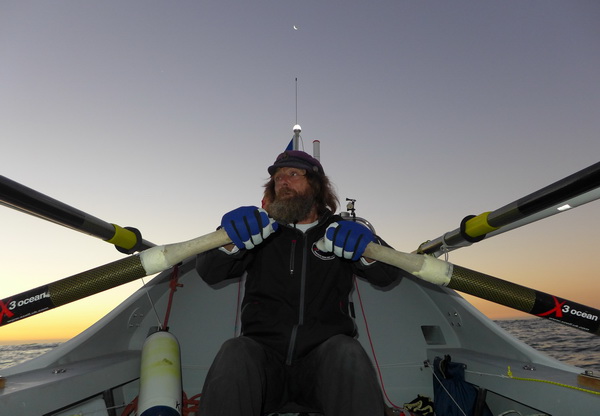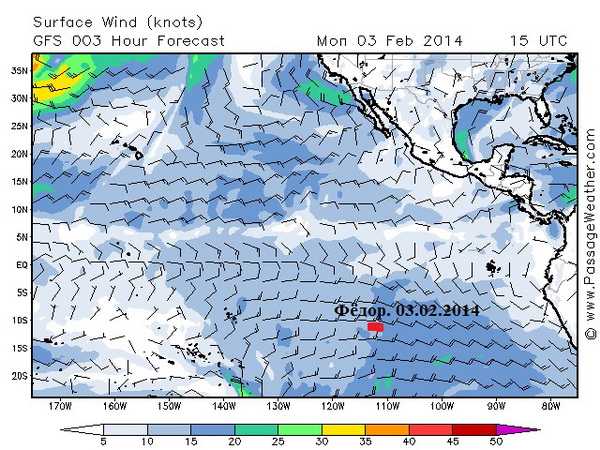Day 43

“The trade winds are blowing full on. It feels as if some invisible force tilted the ocean and I’m rolling downhill following the direction of the westward flow. It’s been almost a month with east to west wind and the Humboldt current in the same direction. These conditions are perfect for my 24 hour mileage goal which is 60 nautical miles at the minimum. To achieve this I row for 15-16 hours a day, maintaining an average speed of 3 knots (3 miles per hour). The rest of the daily miles my boat does on its own. I’m thankful that the tailwind and the current have been in our favor almost from the start. My shift is simple: two hours working on the oars, followed by one hour of sleeping. This results in eight hours of no rowing. Besides sleeping, I spend time working on navigation, preparing meals, pumping fresh water (once every three days), and other miscellaneous works around the boat. I used to set an alarm to wake me up after one hour of sleep, but by now my inner clock has adjusted to this schedule and I wake up on my own. It doesn’t mean that I wouldn’t like to sleep more than an hour, but after I’m up it’s hard to fall back asleep, and I go back on the deck for another two hours of rowing.
The wind, the high seas and the current are all pushing Tourgoyak west at a speed of 1-1.5 knots. Suppose, I decide not to row for a 24 hour stretch. I still would be able to cover about 30 miles. The difference to row or not to row is striking. If I’m rowing I can cover more than 60 miles, and that’s an average. This stretch of the Pacific Ocean is the most favorable and speedy in my entire route from South America to Australia. I’m perfectly aware that this is my high time to cover as much as I possibly can before reaching the French Polynesia. Once in the islands’ region, I will be rowing against head winds or in complete stills, I’m certain of this. Before the expedition my land team and I worked on figuring out what would be the best time for the ocean crossing, along with the best route. Deciding on the perfect start location was critical as well. Our studying of the Pacific ocean’s weather, its winds and currents are paying off big time. Except for the first 3-4 days when I was getting away from the Chilean coast, I haven’t had any prolonged headwinds or stills. According to the long-term forecast the weather and the ocean should continue to allow my steady progress up until the Marquesas Islands . After this way point, it will get increasingly more difficult to keep the steady pace of my rowing.

There was a meteor shower last night. The meteoroids were entering Earth’s atmosphere. I could hear their hissing sounds, like bacon sizzling.
During the day, a school of flying fish jumped out the water. There were so many of them; more than a hundred. I was hoping that a few of them would end up on the deck, but they could see my boat well, and dodged it perfectly.
The intense week-end is over. I’m thankful for your prayers and another good day on the ocean. I’m with you. Fedor.”
The detailed map of the course: www.oceanrowing.com/Konyukhov/Pacific2013/dist_map.htm
Translated by Tatiana Koreski